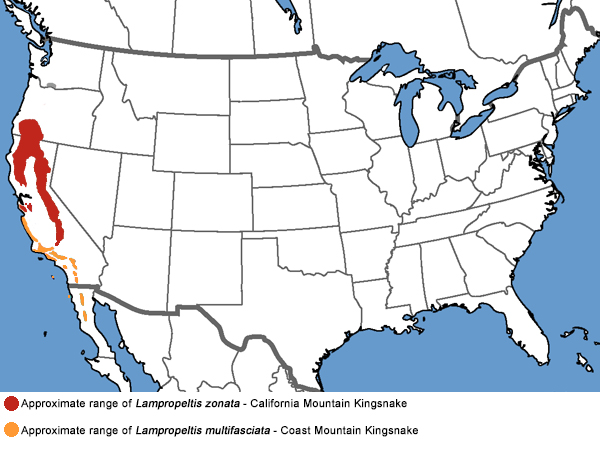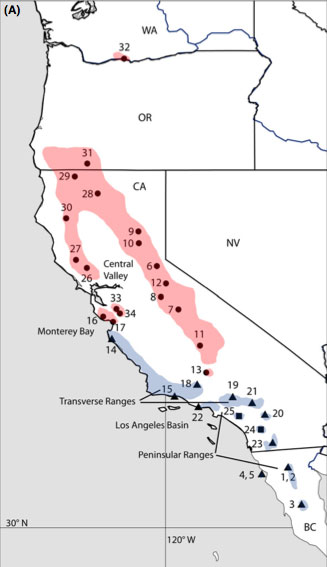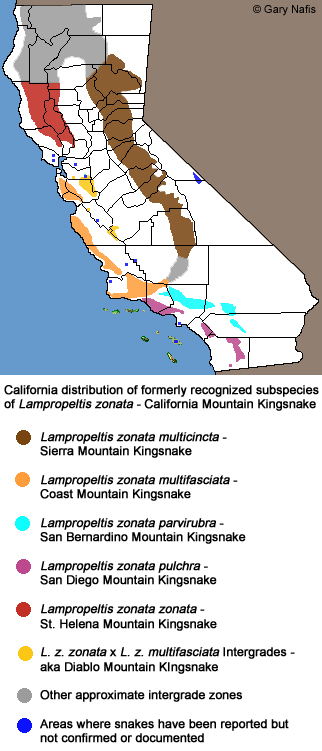Coast Mountain Kingsnake - Lampropeltis multifasciata
Bocourt (1882)Description • Taxonomy • Species Description • Scientific Name • Alt. Names • Similar Herps • References • Conservation Status
 Orange: Range of this species in California
Orange: Range of this species in CaliforniaLampropeltis multifasciata - Coast Mountain Kingsnake
Range of similar species in California:
Red: Lampropeltis zonata - California Mountain Kingsnake
Blue: Areas where mountain kingsnakes have been reported
but not confirmed or documented.
Click on the map for a topographical view
Map with California County Names
| All of the snakes on this page except for those marked as "Species Not Known" are the same species. The SSAR, whose list is followed by this website, has recognized that the species Lampropeltis zonata - California Mountain Kingsnake now consists of two species. (It was formerly was viewed as one species with seven subspecies.) The second species is Lampropeltis zonata - California Mountain Kingsnake. (No subspecies of the two species are recognized.) This page follows the two-species taxonomy but pictures of the snakes are organized in groups based on their former subspecies. |
|||||||||||||||||||||||||||||||||||||||||||||||||||||||||||
| Coast Mountain Kingsnakes formerly recoginzed as Lampropeltis zonata pulchra - San Diego Mountain Kingsnake, From the Peninsular Ranges, the Santa Ana Mountains, and the Santa Monica Mountains |
|||||||||||||||||||||||||||||||||||||||||||||||||||||||||||
 |
|||||||||||||||||||||||||||||||||||||||||||||||||||||||||||
| Adult, Santa Ana Mountains, Riverside County © Nathan Ray | |||||||||||||||||||||||||||||||||||||||||||||||||||||||||||
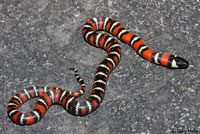 |
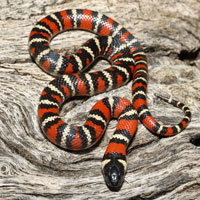 |
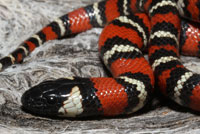 |
 |
||||||||||||||||||||||||||||||||||||||||||||||||||||||||
| Juvenile, San Diego County | Juvenile, San Diego County | ||||||||||||||||||||||||||||||||||||||||||||||||||||||||||
 |
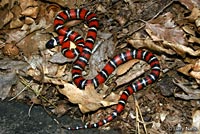 |
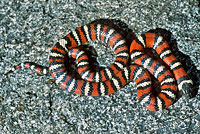 |
 |
||||||||||||||||||||||||||||||||||||||||||||||||||||||||
| Adult, San Diego County | Juvenile, San Diego County | Adult, Santa Ana Mountains ,Riverside County © Nathan Ray | |||||||||||||||||||||||||||||||||||||||||||||||||||||||||
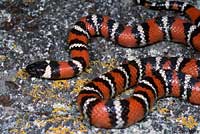 |
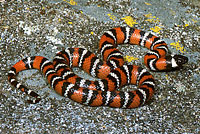 |
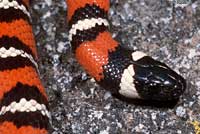 |
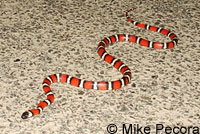 |
||||||||||||||||||||||||||||||||||||||||||||||||||||||||
| Adult, San Diego County | Adult, Orange County. © Mike Pecora | ||||||||||||||||||||||||||||||||||||||||||||||||||||||||||
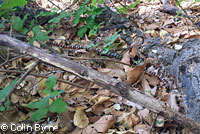 |
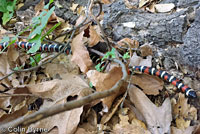 |
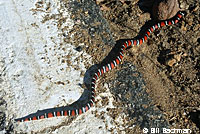 |
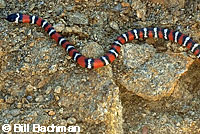 |
||||||||||||||||||||||||||||||||||||||||||||||||||||||||
| Adult, Santa Monica Mountains, Los Angeles County © Colin Byrne | Juvenile observed crossing a road in August, San Diego County © Bill Bachman | ||||||||||||||||||||||||||||||||||||||||||||||||||||||||||
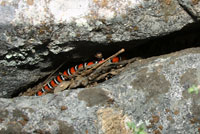 |
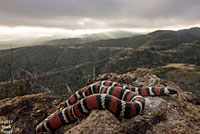 |
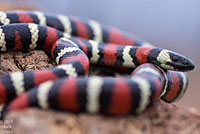 |
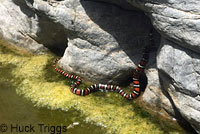 |
||||||||||||||||||||||||||||||||||||||||||||||||||||||||
| Adult basking at the edge of a crack, San Diego County |
Adult, coastal Los Angeles County
© Huck Triggs |
Adult, coastal Los Angeles County © Huck Triggs |
Adult, found in a creek in a rocky canyon in the Santa Monica Mountains, Los Angeles County © Huck Triggs |
||||||||||||||||||||||||||||||||||||||||||||||||||||||||
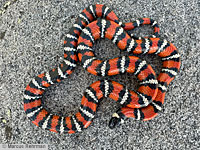 |
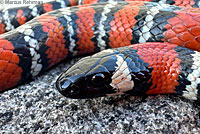 |
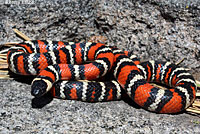 |
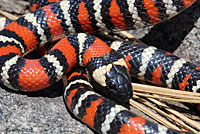 |
||||||||||||||||||||||||||||||||||||||||||||||||||||||||
| Adult, San Diego County © Marcus Rehrman | Adult, San Diego County © Kenny Elliott | ||||||||||||||||||||||||||||||||||||||||||||||||||||||||||
| Abberant Pattern | |||||||||||||||||||||||||||||||||||||||||||||||||||||||||||
 |
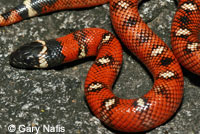 |
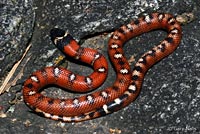 |
|||||||||||||||||||||||||||||||||||||||||||||||||||||||||
| Aberrant juvenile, San Diego County | |||||||||||||||||||||||||||||||||||||||||||||||||||||||||||
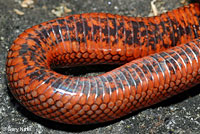 |
|||||||||||||||||||||||||||||||||||||||||||||||||||||||||||
| Underside of aberrant juvenile, San Diego County |
|||||||||||||||||||||||||||||||||||||||||||||||||||||||||||
| Mountain Kingsnakes formerly recognized as Lampropeltis zonata parvirubra - San Bernardino Mountain Kingsnake, From the Transverse Ranges in Southern California |
|||||||||||||||||||||||||||||||||||||||||||||||||||||||||||
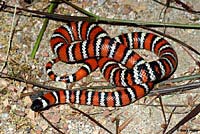 |
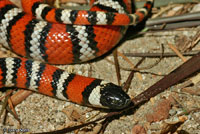 |
 |
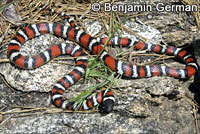 |
||||||||||||||||||||||||||||||||||||||||||||||||||||||||
| Adult, San Jacinto Mountains, Riverside County © Gary Nafis Specimen courtesy of Mitch Mulks | Adult, San Jacinto Mountains, Riverside County © Benjamin German |
||||||||||||||||||||||||||||||||||||||||||||||||||||||||||
 |
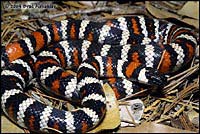 |
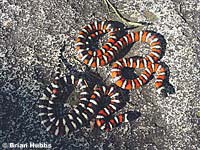 |
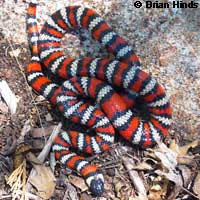 |
||||||||||||||||||||||||||||||||||||||||||||||||||||||||
| Adult, San Jacinto Mountains, Riverside County, © Brad Alexander | Two adults from the same rock outcrop in the San Bernardino Mountains, San Bernardino County © Brian Hubbs | Adult, San Jacinto Mountains, Riverside County. © Brian Hinds |
|||||||||||||||||||||||||||||||||||||||||||||||||||||||||
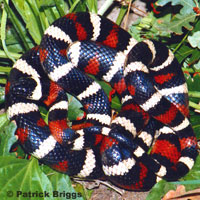 |
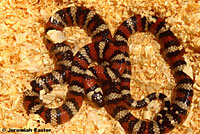 |
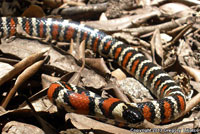 |
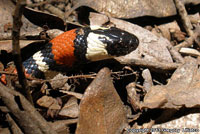 |
||||||||||||||||||||||||||||||||||||||||||||||||||||||||
| Adult, San Bernardino County © Patrick Briggs |
Adult, San Gabriel Mountains Los Angeles County © Jeremiah Easter |
Adult, San Gabriel Mountains, Los Angeles County © Gregory Litiatco | |||||||||||||||||||||||||||||||||||||||||||||||||||||||||
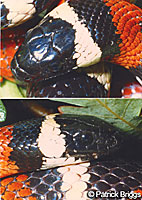 |
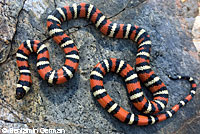 |
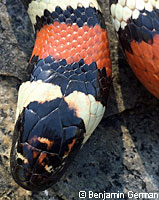 |
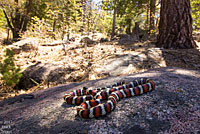 |
||||||||||||||||||||||||||||||||||||||||||||||||||||||||
| Head Study, San Bernardino County © Patrick Briggs |
Adult, found at 7,000 ft. elevation in Ventura County © Benjamin German | Adult, San Bernardino County © Huck Triggs |
|||||||||||||||||||||||||||||||||||||||||||||||||||||||||
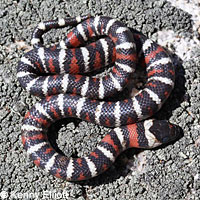 |
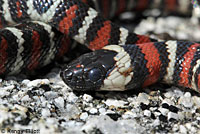 |
||||||||||||||||||||||||||||||||||||||||||||||||||||||||||
| Juvenile, Mt. San Jacinto, Riverside County © Kenny Elliott | |||||||||||||||||||||||||||||||||||||||||||||||||||||||||||
| Coast Mountain Kingsnakes formerly recognized as Lampropeltis zonata multifasciata - Coast Mountain Kingsnake, from the Central Coast Region South of Monterey Bay |
|||||||||||||||||||||||||||||||||||||||||||||||||||||||||||
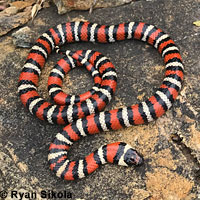 |
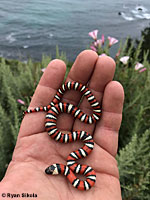 |
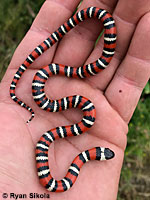 |
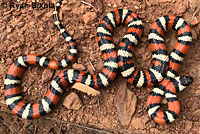 |
||||||||||||||||||||||||||||||||||||||||||||||||||||||||
| Adult, Monterey County © Ryan Sikola |
Juvenile, Monterey County © Ryan Sikola |
Juvenile, Monterey County © Ryan Sikola |
Adult, Monterey County © Ryan Sikola |
||||||||||||||||||||||||||||||||||||||||||||||||||||||||
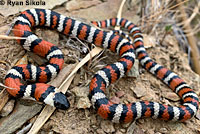 |
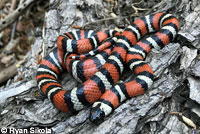 |
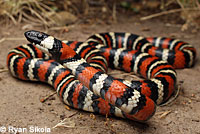 |
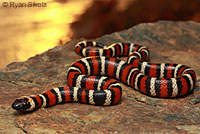 |
||||||||||||||||||||||||||||||||||||||||||||||||||||||||
| Adult, Monterey County © Ryan Sikola |
Adult, Central Coast © Ryan Sikola |
Adult, Santa Barbara County © Ryan Sikola |
Adult, Central Coast © Ryan Sikola |
||||||||||||||||||||||||||||||||||||||||||||||||||||||||
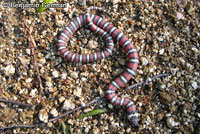 |
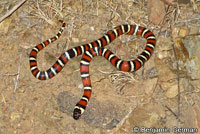 |
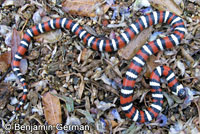 |
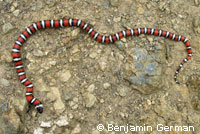 |
||||||||||||||||||||||||||||||||||||||||||||||||||||||||
| Juvenile, northern Santa Lucia Mountains, Monterey County © Benjamin German |
Adult, southern Santa Lucia Mountains, Monterey County (near the border with San Luis Obispo County) © Benjamin German |
Adult, Santa Lucia Mountains, Monterey County © Benjamin German |
Adult, Santa Lucia Mountains, Monterey County © Benjamin German | ||||||||||||||||||||||||||||||||||||||||||||||||||||||||
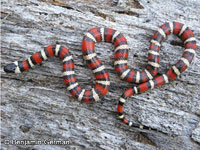 |
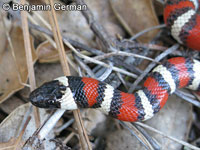 |
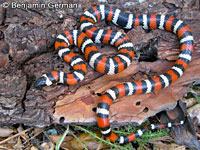 |
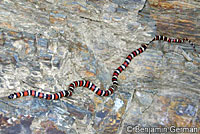 |
||||||||||||||||||||||||||||||||||||||||||||||||||||||||
| Juvenile, Gabilan Mountains, San Benito County © Benjamin German |
Adult, Gabilan Mountains, San Benito County © Benjamin German |
Adult, Monterey County © Benjamin German |
|||||||||||||||||||||||||||||||||||||||||||||||||||||||||
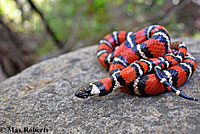 |
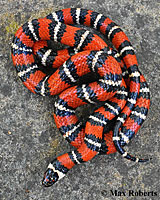 |
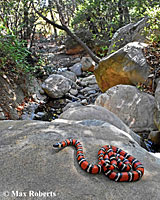 |
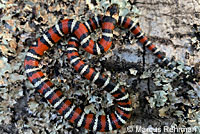 |
||||||||||||||||||||||||||||||||||||||||||||||||||||||||
| Adult Santa Barbara County © Max Roberts |
Adult, Santa Cruz County © Marcus Rehrman |
||||||||||||||||||||||||||||||||||||||||||||||||||||||||||
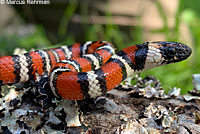 |
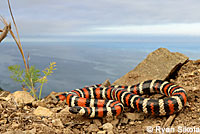 |
||||||||||||||||||||||||||||||||||||||||||||||||||||||||||
| Adult, Santa Cruz County © Marcus Rehrman |
Adult, Monterey County © Ryan Sikola |
||||||||||||||||||||||||||||||||||||||||||||||||||||||||||
| Species Not Known These snakes from the coast range south of Monterey Bay were not included in the study that recognized two species. They could be either L. zonata - California Mountain Kingsnake, or L. multifasciata - Coast Mountain Kingsnake |
|||||||||||||||||||||||||||||||||||||||||||||||||||||||||||
 |
 |
 |
|||||||||||||||||||||||||||||||||||||||||||||||||||||||||
| Adult, Gabilan Mountains, San Benito County © Benjamin German |
Juvenile, Gabilan Mountains, San Benito County © Benjamin German |
||||||||||||||||||||||||||||||||||||||||||||||||||||||||||
| Habitat | |||||||||||||||||||||||||||||||||||||||||||||||||||||||||||
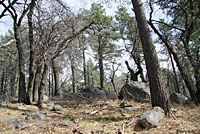 |
 |
 |
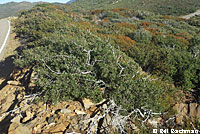 |
||||||||||||||||||||||||||||||||||||||||||||||||||||||||
| Habitat, 6,000 ft., San Diego County | Habitat, 5,500 ft. San Diego County | Habitat, 6,000 ft., San Diego County | Manzanita and chaparral habitat, Laguna Mountans, San Diego County © Bill Bachman |
||||||||||||||||||||||||||||||||||||||||||||||||||||||||
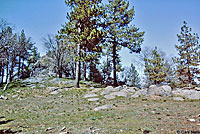 |
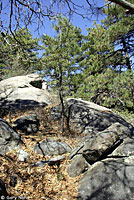 |
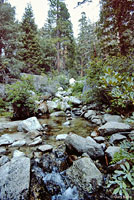 |
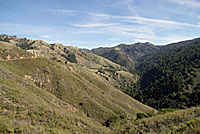 |
||||||||||||||||||||||||||||||||||||||||||||||||||||||||
| Habitat, 5,500 ft. San Diego County | Habitat, 6,000 ft., San Diego County | Habitat, 5,600 ft., San Jacinto Mountains, Riverside County | Habitat, coast range, Monterey County | ||||||||||||||||||||||||||||||||||||||||||||||||||||||||
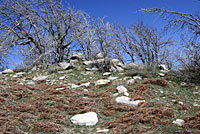 |
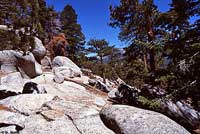 |
 |
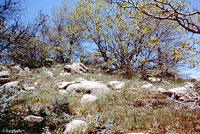 |
||||||||||||||||||||||||||||||||||||||||||||||||||||||||
| Habitat, 6,200 ft. San Bernardino Mountains, San Bernardino County | Habitat, San Jacinto Mountains, Riverside County |
Habitat, 5,800 ft. San Bernardino Mountains, San Bernardino County | Habitat, 6,200 ft. San Bernardino Mountains, San Bernardino County | ||||||||||||||||||||||||||||||||||||||||||||||||||||||||
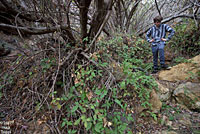 |
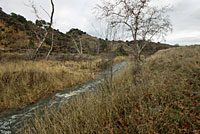 |
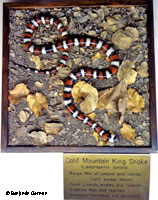 |
|||||||||||||||||||||||||||||||||||||||||||||||||||||||||
| Habitat, Santa Monica Mountain © Huck Triggs |
Habitat, Santa Monica Mountain © Huck Triggs |
Monterey museum exhibit. Exhibits like this one have inspired many a young herper with the desire to see this beautiful snake in the wild. © Benjamin German |
|||||||||||||||||||||||||||||||||||||||||||||||||||||||||
| Short Video | |||||||||||||||||||||||||||||||||||||||||||||||||||||||||||
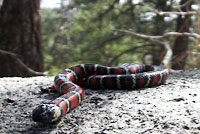 |
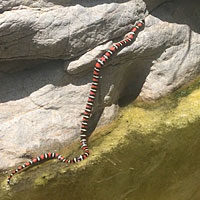 |
||||||||||||||||||||||||||||||||||||||||||||||||||||||||||
| A short look at a juvenile Coast Mountain Kingsnake found under a rock in San Diego County | This short video shows an adult mountain kingsnake in a creek in a rocky canyon in the Santa Monica Mountains, Los Angeles County © Huck Triggs | ||||||||||||||||||||||||||||||||||||||||||||||||||||||||||
|
|||||||||||||||||||||||||||||||||||||||||||||||||||||||||||
|
|||||||||||||||||||||||||||||||||||||||||||||||||||||||||||
|
The following conservation status listings for this animal are taken from the April 2024 State of California Special Animals List and the April 2024 Federally Listed Endangered and Threatened Animals of California list (unless indicated otherwise below.) Both lists are produced by multiple agencies every year, and sometimes more than once per year, so the conservation status listing information found below might not be from the most recent lists. To make sure you are seeing the most recent listings, go to this California Department of Fish and Wildlife web page where you can search for and download both lists: https://www.wildlife.ca.gov/Data/CNDDB/Plants-and-Animals. A detailed explanation of the meaning of the status listing symbols can be found at the beginning of the two lists. For quick reference, I have included them on my Special Status Information page. If no status is listed here, the animal is not included on either list. This most likely indicates that there are no serious conservation concerns for the animal. To find out more about an animal's status you can also go to the NatureServe and IUCN websites to check their rankings. Check the current California Department of Fish and Wildlife sport fishing regulations to find out if this animal can be legally pursued and handled or collected with possession of a current fishing license. You can also look at the summary of the sport fishing regulations as they apply only to reptiles and amphibians that has been made for this website. --------------------------------------------------------------------------------------------------------------------------------------------------------------------------------------------------------------------- The current Special Animals List does not cover the Coast Mountain Kingsnake (Lampropeltis multifasciata) but the California Department of Fish and Wildlife affords protection to some populations of the species. The information below is about snakes that can be legally collected from the CDFW Sportfishing Regulations, which, unlike this web site, uses taxonomy that recognizes subspecies of L. zonata. Basically, L. zonata can be collected but the two southern California subspecies L. z. pulchra and L.z. parvirubra are protected, as well as all L. z. multifasciata found in Ventura County. "California mountain kingsnake (Lampropeltis zonata), except San Diego mountain kingsnake (Lampropeltis zonata pulchra) and San Bernardino mountain kingsnake (Lampropeltis zonata parvirubra): Limit: One (1). See Special Closure: (f) (9): (f) (9) No California mountain kingsnakes (Lampropeltis zonata) may be taken in Imperial, Los Angeles, Orange, Riverside, San Bernardino, San Diego, and Ventura counties." |
||
| Organization | Status Listing | Notes |
| NatureServe Global Ranking | ||
| NatureServe State Ranking | ||
| U.S. Endangered Species Act (ESA) | None | |
| California Endangered Species Act (CESA) | None | |
| California Department of Fish and Wildlife | ||
| Bureau of Land Management | ||
| USDA Forest Service | ||
| IUCN | ||
Return to the Top
© 2000 -


